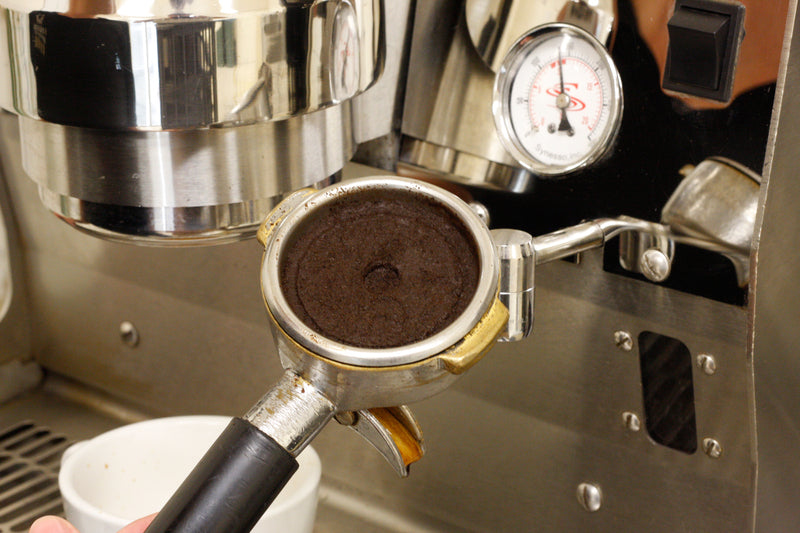On face value, looking at the quality of your coffee puck may seem like a really weird thing to do, but it is essential to get the best out of your machine. The reason why this is becoming more important is because of the growing interest in buying electronically timed grinders over manual dosing models.
So what is the dose? And how does that affect the quality of the coffee puck? The dose is the quantity of coffee that is placed into the portafitler basket. This amount can vary from machine to machine, so it is impossible to ever say that the ideal quantity of coffee is a given weight. The best way to check your dosing is after the shot has been extracted!
To begin, you can only do this if your machine has a three-way brew valve (all commercial machines have one, but domestic machines may not). This is the valve that allows pressure to be released at the end of the extraction. On a domestic machine, it is fairly simple to see. When you finish pulling your shot, water should run down a pipe and into the drip tray. Without it, your coffee will always look a little like coffee soup, no matter how much coffee you put in the portafilter.
After you have pulled a shot at the ideal speed (so the grind is where you want it), wait a few moments for the water to drain and remove your portafilter from the machine. Press on the surface of the coffee, the surface should feel firm with a spongy surface (Picture #1). Knock the puck out onto the bench, and you should find that it stays intact, indicating that your dose is perfect.
If your dose is too high and the coffee puck feels like a rock rather than having that spongy feel (Picture #2), this would indicate that there is no expansion of the coffee taking place, which can actually cause a shorter shot. It also starts to put pressure on the gasket and shower screen of your machine — meaning maintenance will have to occur more frequently than otherwise necessary.
If your coffee puck is too soft or muddy, then you are dosing too low (Picture #3). A low dose means that you may have had channelling through your coffee, causing an uneven extraction (see the holes in Picture #3). Also, your espresso will lack body and sweetness, making it taste a little thin and over extracted.
With the advent of the modern electronic grinder, it has become critical to be aware of how they work. The grinders grind for a given amount of time, say three seconds for a commercial grinder and about ten seconds for a domestic grinder, which might produce around 20g of coffee. (Note: this amount varies for every model of electronic grinder). If your shot is a little slow and you adjust the grind to make it coarser, you have now moved the burrs of the grinder further apart. This is important to realise because the increased distance means that the beans will now go through the burrs slightly faster, hence, increasing the dose. So now you have a situation where you have adjusted the grinder to a coarser setting in order to increase the shot speed, but suddenly that grind setting will now dose 21g over the same three-ten second period — which would slow your shot back down again.
Therefore, every time you change the grind setting, you also must adjust the size of the dose — a coarser setting would result in a higher dose, and a finer setting, a lower dose. Then continue to check in with your puck in order to maintain appropriate dosing proportions. This is well worth the attention to detail.






